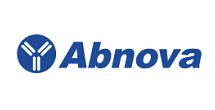CBL & MET Protein Protein Interaction Antibody Pair



* The price is valid only in USA. Please select country.
-
More Files
- More Functions
-
Specification
Product Description
This protein protein interaction antibody pair set comes with two antibodies to detect the protein-protein interaction, one against the CBL protein, and the other against the MET protein for use in in situ Proximity Ligation Assay. See Publication Reference below.

Reactivity
Human
Quality Control Testing
Protein protein interaction immunofluorescence result.
Representative image of Proximity Ligation Assay of protein-protein interactions between CBL and MET. HeLa cells were stained with anti-CBL rabbit purified polyclonal antibody 1:1200 and anti-MET mouse purified polyclonal antibody 1:50. Each red dot represents the detection of protein-protein interaction complex. The images were analyzed using an optimized freeware (BlobFinder) download from The Centre for Image Analysis at Uppsala University.
Supplied Product
Antibody pair set content:
1. CBL rabbit purified polyclonal antibody (100 ug)
2. MET mouse purified polyclonal antibody (40 ug)
*Reagents are sufficient for at least 30-50 assays using recommended protocols.Storage Instruction
Store reagents of the antibody pair set at -20°C or lower. Please aliquot to avoid repeated freeze thaw cycle. Reagents should be returned to -20°C storage immediately after use.
-
Applications
In situ Proximity Ligation Assay (Cell)
-
Gene Info — CBL
Entrez GeneID
867Gene Name
CBL
Gene Alias
C-CBL, CBL2, RNF55
Gene Description
Cas-Br-M (murine) ecotropic retroviral transforming sequence
Omim ID
165360Gene Ontology
HyperlinkGene Summary
The cbl oncogene was first identified as part of a transforming retrovirus which induces mouse pre-B and pro-B cell lymphomas. As an adaptor protein for receptor protein-tyrosine kinases, it positively regulates receptor protein-tyrosine kinase ubiquitination in a manner dependent upon its variant SH2 and RING finger domains. Ubiquitination of receptor protein-tyrosine kinases terminates signaling by marking active receptors for degradation. [provided by RefSeq
Other Designations
oncogene CBL2
-
Gene Info — MET
Entrez GeneID
4233Gene Name
MET
Gene Alias
AUTS9, HGFR, RCCP2, c-Met
Gene Description
met proto-oncogene (hepatocyte growth factor receptor)
Gene Ontology
HyperlinkGene Summary
The proto-oncogene MET product is the hepatocyte growth factor receptor and encodes tyrosine-kinase activity. The primary single chain precursor protein is post-translationally cleaved to produce the alpha and beta subunits, which are disulfide linked to form the mature receptor. Various mutations in the MET gene are associated with papillary renal carcinoma. Two transcript variants encoding different isoforms have been found for this gene. [provided by RefSeq
Other Designations
HGF receptor|OTTHUMP00000069168|SF receptor|met proto-oncogene|met proto-oncogene tyrosine kinase|oncogene MET|scatter factor receptor
-
Interactome
-
Pathway
-
Disease
- +1-909-264-1399
+1-909-992-0619
Toll Free : +1-877-853-6098 - +1-909-992-3401
- sales@abnova.com


















